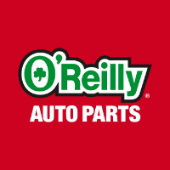-
Welcome to Auto Parts Forum
Whether you are a veteran automotive parts guru or just someone looking for some quick auto parts advice, register today and start a new topic in our forum. Registration is free and you can even sign up with social network platforms such as Facebook, X, and LinkedIn.
How to Change a Headlight Bulb
-
Similar Topics
-
By Counterman
The Schaeffler Group announced it has once again been awarded an “A” rating in the climate change category for its commitment to sustainability in fiscal 2024 by CDP, the global non-profit environmental organization. In the water security category,
link hidden, please login to view received an “A-”, the same score as in the previous year. CDP, which was founded 25 years ago, manages the world’s largest environmental database. Once a year, it collects data and information from companies worldwide on their greenhouse gas emissions, climate risk profiles, and corporate reduction targets and strategies.
“The renewed award with the grade ‘A’ in the area of climate change is a recognition of our commitment to sustainability,” explained Klaus Rosenfeld, CEO of
link hidden, please login to view. “At the same time, we are aware that there is still a lot of work ahead of us to achieve our ambitious sustainability goals. Even after the merger with Vitesco Technologies, we will continue to consistently drive forward the sustainable development of the company. Sustainability remains an important prerequisite for becoming the leading motion technology company.” The CDP rating is regarded worldwide as an important reference for a company’s environmental transparency, Schaeffler said. CDP scores are often used in investment and procurement decisions with a view to achieving a climate-friendly, sustainable and resilient economy. CDP uses a detailed, independent scoring methodology to assess companies and awards scores from “A” to “D-”.
The post
link hidden, please login to view appeared first on link hidden, please login to view.
link hidden, please login to view -





Recommended Posts
Join the conversation
You can post now and register later. If you have an account, sign in now to post with your account.
Note: Your post will require moderator approval before it will be visible.